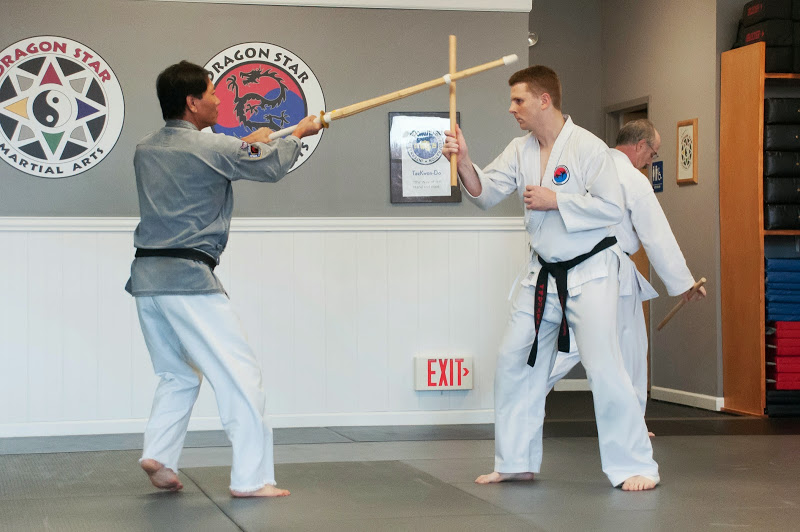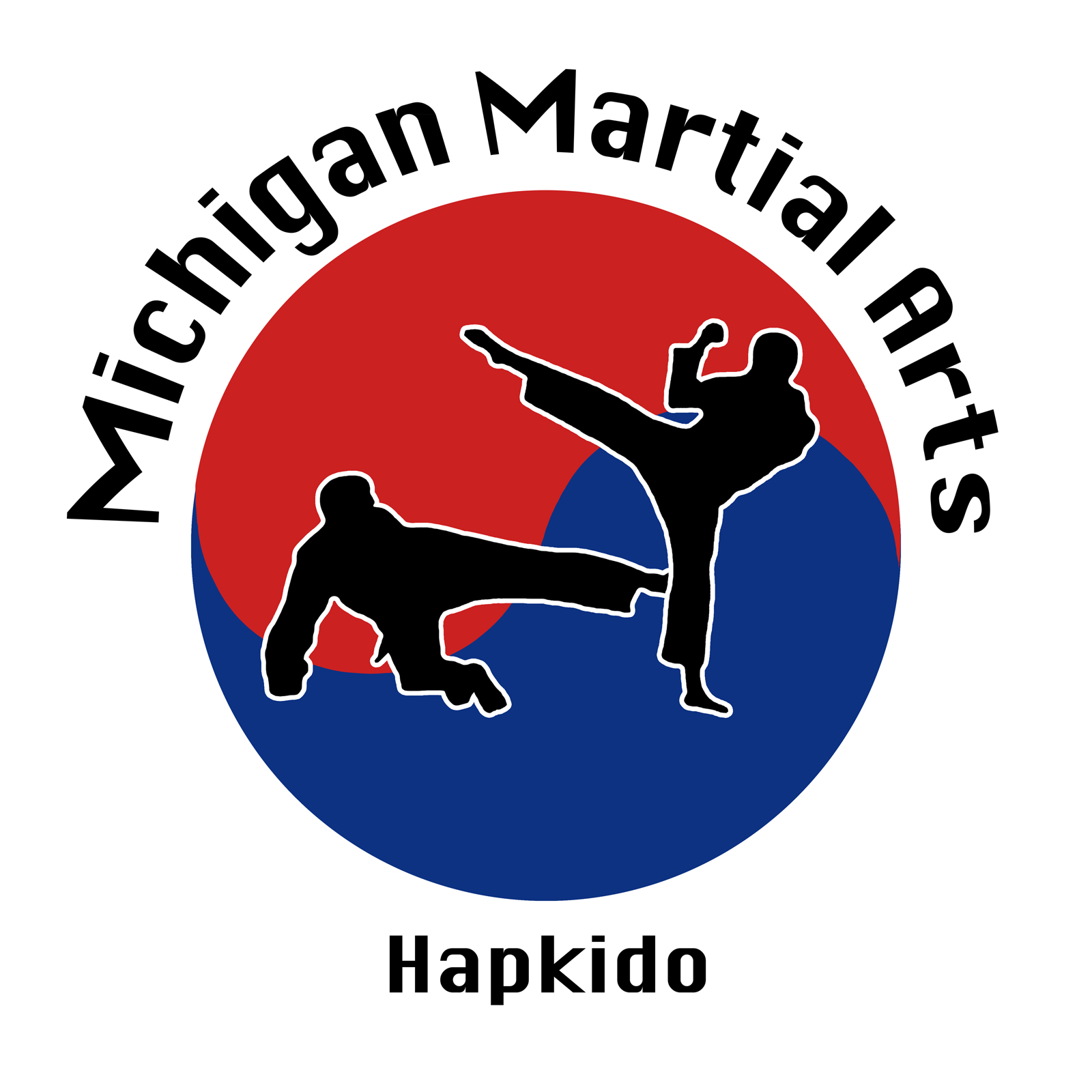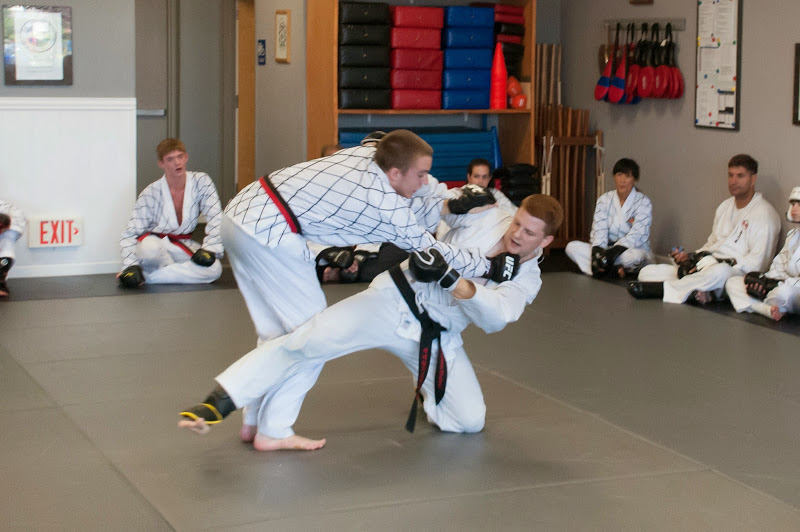

What Is Hapkido?
Hapkido is a discipline of coordination, a way of strengthening the mind and body, of fusing the individual’s physical and mental powers so that he or she will emerge as a more fully integrated human being.
The word in fact means; Method or Way (DO) for the coordination Harmony (HAP) of mental Energy or spirit (KI). One should always try to avoid violence, but if someone grabs you, attempts to strike you, or physically assaults you in any way, it has escalated beyond words, and you are left with the only option, which is to defend.
The Korean Art of Self Defense, Hapkido is considered a "soft" style of Martial Art, as opposed to "hard" styles that practice the use of force against force, making the outcome a simple matter of size and strength. The Hapkido practitioner diverts or suppresses an attacker's flow of energy peacefully, this diversion allows him to use the attackers power against himself leading to the attackers defeat. Through the use of pressure on certain skeletal joints and pressure points, very little strength is needed to overcome an opponent.
Hap Ki Do not only redirects the attack, but also turns it back against the attacker and follows through with offensive techniques, which may control his violence or render him incapable of further antagonistic actions. The Hapkido practitioner is in complete control of the confrontation defusing the aggression without the need for uncontrolled damage as seen in many "hard" styles.
Hap Ki Do provides complete physical conditioning, which improves balance, posture, flexibility, timing, quickness, muscle tone, joint strength and most importantly, confidence through physical and mental discipline.
The immediate aim of Hapkido is of course the welfare of the one practicing it. Not only will skills in self-defense be attained, but also more importantly will be the focus on an individual’s character development. A well-rounded personality can be realized only if the spirit is right. Courtesy, Respect, Modesty, Loyalty, Generosity, and Dedication are not only the source, but also the rewards of Hapkido.


The word Hapkido consists of three words from the Korean language. The first word, Hap means to combine, coordinate, or make one. This combining or harmonizing is part of what makes Hapkido such a versatile and effective martial art. Hap refers to the ability to harmonize with an opponent's energy, momentum, weight, speed, strength, and angle of attack. Through effective timing, rhythm, body mechanics and movement students learn to overcome a larger, stronger, or even faster opponent.
The second term, Ki identifies the power that pervades the universe, and has been defined as mind, spirit, heart, or breath depending upon the context in which it is used. Ki is a form of vital energy, representing the life force and a source of internal strength. Ki development through the unification of mind, body, and breath is an essential element of Hapkido.
The third word, Do means the way or the path. This term implies a journey or the pursuit of a particular lifestyle, philosophy, or discipline. Such a journey requires dedication to finding harmony and peace among one's fellow man and with the very forces and rhythms of the universe.

Four Elements of Hapkido
치기: Chi-ki meaning to 'Hit"
차기: Cha-ki meaning to "Kick"
꺽기: Keuk-ki meaning to "Twist or Lock"
던지기: Dun-Chi-ki meaning to "Throw or Take-down"

Three Principles of Hapkido
Hapkido Relies On Three Core Principles:
YU -- Theory of Flowing Water
In Hapkido practice, one does not stop an attacker’s force directly with force, but redirects it. Water will never struggle with an object that it encounters instead, it simply flows around it. Water can be soft or hard depending on how it is struck. Most people think of water for it's softness. Softness has the capacity to win against hardness. A tempered steel bar will eventually break under enough stress. Water on the other hand, though it may be made to break up, will invariably join together again.
WON -- Theory of the Circle
As opposed to linear movements, the use of circular, fluid, flowing movements. The theory of the circle is emphasized in Hapkido. Everyone has their own circle. Inside this circle is their private territory. If someone were to enter this private domain with out approval or proper warning, each person has a right to defend against this invasion. When an opponent punches, if the punch doesn’t trespass into one’s circle, there is no need to block. If one chooses to bock , it is considered a waste of time and energy. When an opponent’s punch does penetrate the circle, it should be received indirectly; leading this force in a circle minimizes its effect. Utilizing a circle not only disrupts the opponent’s force, but also sets the position for a counterattack. Additionally, compounding circles can produce greater speed and power.
WHA -- Theory of Harmony
In Hapkido training, there must exist a simultaneous combination of mind, body, environment and techniques. Harmony is the most important element one should achieve in his training. After one achieves harmony with himself, the next requirement is to harmonize with one’s opponent. Following this, learning to harmonize with the environment is the next stage. The final task is blending the harmony that one has developed with himself, the opponent, and the environment with that of his techniques.